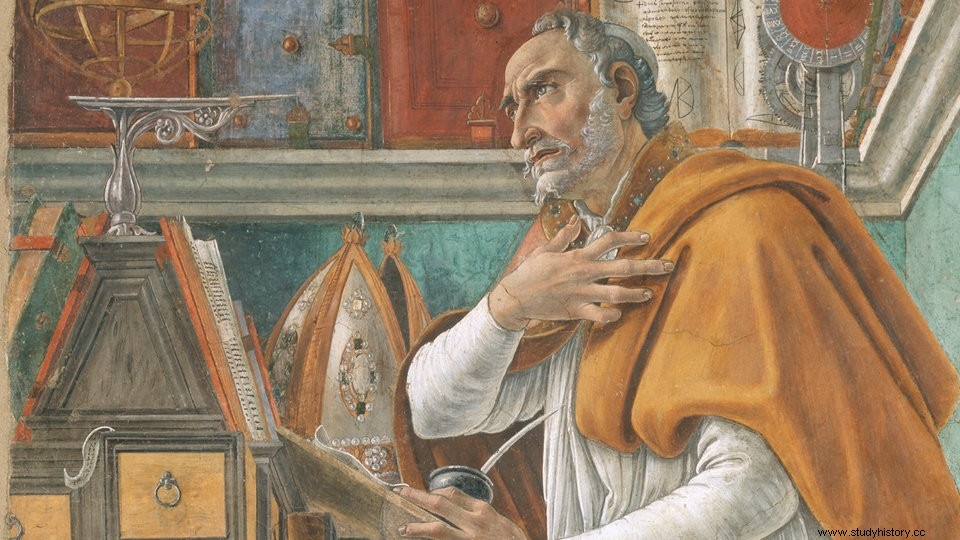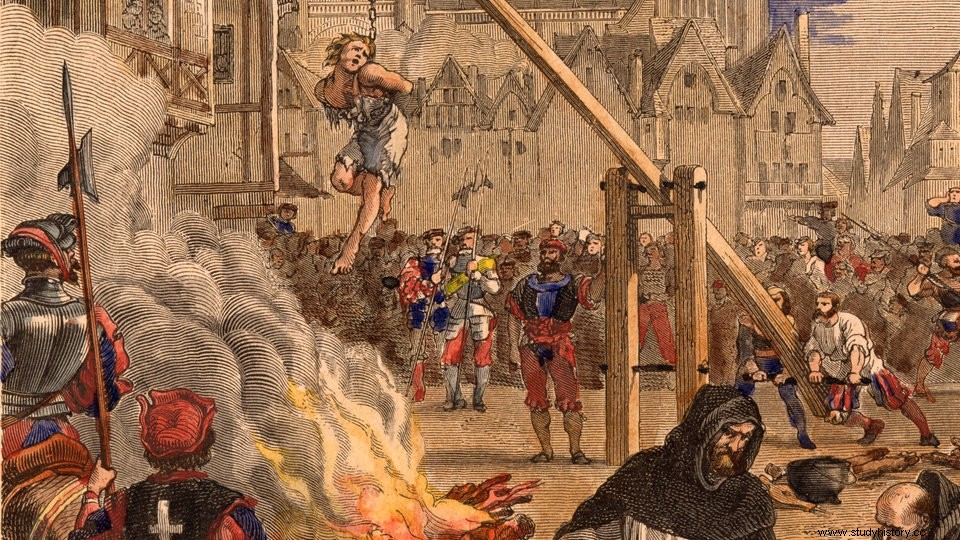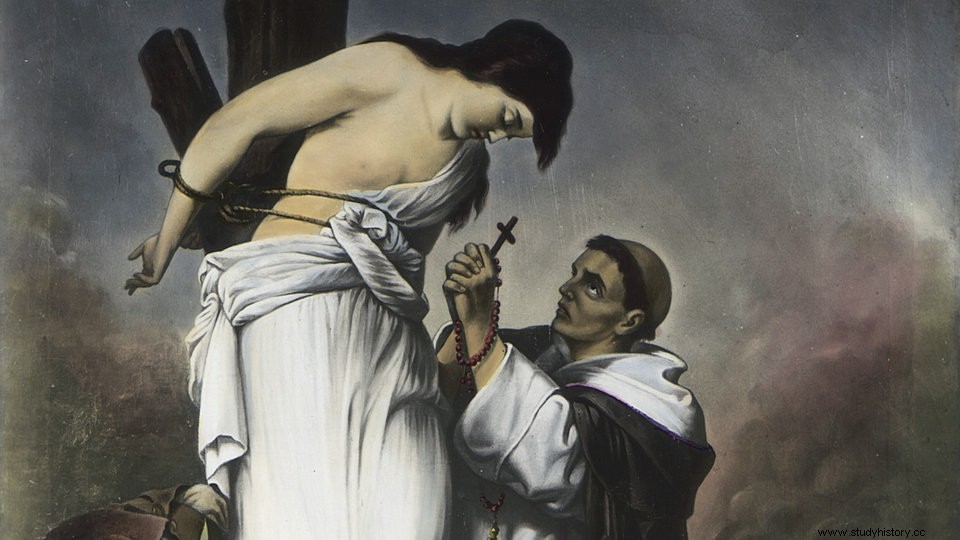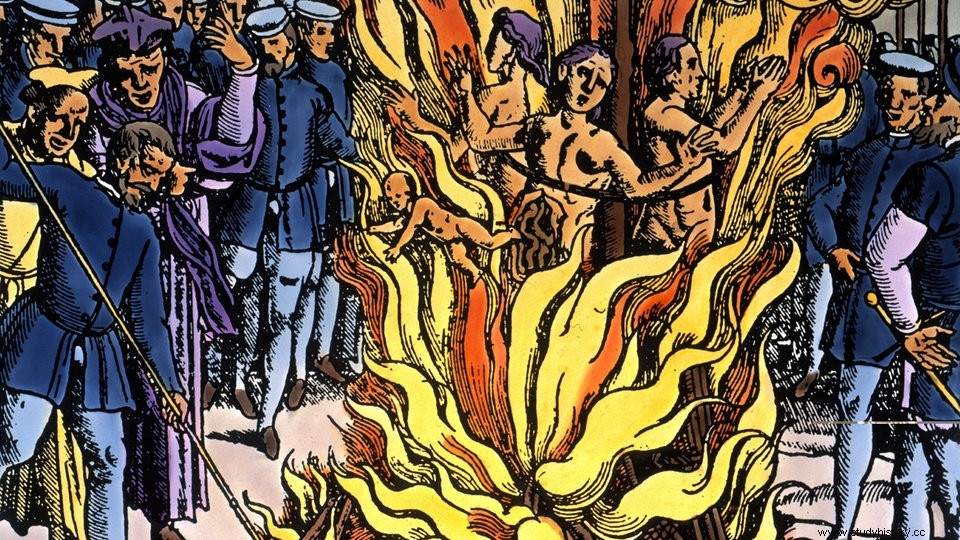It is said that they ride broomsticks, meet at the witches' dance, make a pact with the devil and can use their magic powers to cause all sorts of damage:the belief in witches is ancient.
An ancient belief
In the early modern period, real hunts for supposed witches began. Thousands of people - mostly women - died at the stake.
The belief in beings that we now call witches and who can cause damage with their magic runs through all cultures and times across the world.
Even in the ancient high cultures of Egypt, Babylonia or Assyria, people were convinced of the existence of so-called intermediate beings (demons). Even at this time, supposed magicians are already being punished with death, but there are no targeted persecutions.
In the Roman Empire, too, the majority of the population believed in magic, but only its abuse was punished. So-called harm sorcerers have been burned alive since the 3rd century AD, while benevolent sorcery goes unpunished.
Only with the rise of the Christian religion in the 4th century AD was the death penalty imposed on any type of magic. What is astonishing is that the early Christians did not believe in the effectiveness of magic at all, but regarded the mere attempt as devilish.
Pact with the devil
The great church scholar Augustine (354-430) was the first to deal extensively with magic and sorcery in his writings. In his view, magical acts are in principle ineffective, but presuppose a tacit pact with the devil. He does not give instructions on how to punish magicians.
The teachings of Augustine had a significant impact on dealing with supposed magicians and witches throughout the early and high Middle Ages (about 500-1250). Although there are isolated trials for sorcery, which in the worst case can end with a death penalty, one cannot speak of targeted prosecutions.
The church even expressly opposes lynch law and pogroms, which are sometimes carried out by parts of the population.

Augustine did not believe in magic
The people, while believing in magic, live by and large in peaceful coexistence with the supposed sorcerers. Convictions are very rare. Those who have been harmed are usually only anxious for the magic to be lifted. Also the church has no special interest in the prosecution and punishment of magicians during this period.
In the "Canon episcopi", a canon law of the year 906, women are described who make a pact with the devil during their nocturnal, ecstatic flights.
From the Church's point of view, however, the flights are merely delusions on the part of the women. They are taken to be people who hold erroneous beliefs and therefore need to be repented of. In the worst case, this means that women are excluded from the community, which is tantamount to social ostracism.
Increasing threat
From the 13th century onwards, the Church adopted a much sharper tone towards alleged witches. Thomas Aquinas (around 1225-1274), one of the most important church theorists of the Middle Ages, assumes in his writings that witchcraft can actually be carried out with the help of the devil.
He also describes in detail the magical practices of the witches, for example the pact with the devil, witch aviation, animal transformation or weather making. In his eyes, witches are harmful women. As a renowned thinker, he laid the theoretical foundation for the later mass burnings of witches.

Thomas Aquinas
In his wake, numerous ecclesiastical scholars publish tracts describing supposed witchcraft sects and classifying their crimes. The image of witches is gradually changing:goaded by preachers and authors, the population perceives the presence of witches as increasingly threatening.
One of the core areas is today's Switzerland. Here, at the beginning of the 15th century, inquisitors identified supposed new sects that were heavily influenced by Jewish and witchcraft beliefs.
In a trial against such a sect member in 1419 in the Swiss city of Lucerne, the German word "hexerye" appears for the first time to describe the practices.
Legal basis
The Catholic Church feels compelled to act. As more and more people seem to fall for magic, it redefines belief in witches at the Council in Basel (1431-1449). Treatises are written that are no longer written by individuals, but by a large witch sect. The inquisitors should keep their eyes open and take action against these sects.
Shortly after the treatises were published, the population accepted the belief in the witch sects. Around 1450, paintings depicting flights of witches were increasingly appearing in churches. There are first targeted persecutions by agitated farmers, mainly in the valleys of the Swiss Alps.
Inquisitors appointed by the Roman Curia roam the bishoprics to organize targeted witch hunts. The most notorious among them is Heinrich Kramer (around 1430-1505):Appointed inquisitor for all of Upper Germany in 1478, he had numerous alleged witches sentenced to death within a few years.

The fear of witches increases in the 15th century
Since there were still many opponents of the persecution both in the church and in secular politics, he wrote a paper in 1484 which he had the incumbent Pope Innocent VIII (1432-1492) sign. With the Pope's so-called "witch bull" the Catholic Church legalizes the witch hunts of the inquisitors for the first time.
Despite the "witch bull" Kramer was unsuccessful in a witch trial he had initiated in Innsbruck in 1485. The local bishop is not convinced of the legality, lets the process burst and throws Kramer out of Tyrol.
This failure prompted him to write his famous book "Hexenhammer", in which he describes in detail the crimes of witches and sets out rules for the trials against them. Soon after its publication in 1487, the book was well received throughout Europe.
Beginning of the hunt
The "Hexenhammer" hits fertile ground. At the end of the 15th century, the living conditions of the population deteriorated dramatically. Long and hard winters are responsible for drastic crop losses, epidemics are spreading and killing large parts of the population. Witches in particular are held responsible for the evils.
According to estimates, in the first 30 years after the publication of the "Hexenhammer" several thousand people died at the stake across Europe.

Death at the stake
Around 1520 the first wave of persecution died down. Some secular rulers, the reformed areas in Germany and the Spanish Inquisition reject the burning of witches and even make it a punishable offense.
But the closed season for alleged witches does not last long. In the middle of the 16th century, living conditions deteriorated again. A new wave of cold breaks over Europe. Food is becoming so expensive that large parts of the population go hungry.
Spurred on by sermons by opponents of witchcraft, witch hunts begin again across all denominations. In many European countries, the trials reach their peak between 1570 and 1590.
Special case Central Europe
While the supply situation gradually stabilized in western and southern Europe around 1600 and the persecutions decreased, there was another clear increase in central Europe, which reached its peak in the Thirty Years' War (1618-1648).
Between 1626 and 1630 there is a concentration of unfavorable conditions:Due to the turmoil of the war, many fields lie fallow, other fields cannot produce any crops due to poor weather conditions.
In 1626, the frost was so severe until the end of May that even ponds froze over. Again, witches are held accountable for the weather damage. Thousands of people are being killed in summary proceedings in an unprecedented manhunt. Between 1626 and 1635 more than 2000 executions took place in the Electorate of Cologne alone.
This time, however, it not only affects older, poor women, but also clergymen and members of the nobility who want to oppose the burning. The whole of Central Europe is affected by a kind of apocalyptic mood. At the insistence of the peasants, rulers who were skeptical about the hunts had pyres built in large numbers.

No end in sight
Moral and legal concerns
The economic, climatic and political conditions did not stabilize until the end of the 17th century. The persecutions are increasingly becoming a disruptive factor for the ruling elites. In the Age of Enlightenment, scientific knowledge is given more importance than magic and superstition.
Witch trials are a rarity throughout the 18th century. Isolated executions only occur in remote rural areas. The enlighteners are slowly gaining the upper hand over the conservative clerics with their writings against witch hunts.
When the last witch was executed in Switzerland in 1782, it sparked an outraged public debate about the dubious legal basis of the process.
The judiciary is reformed almost everywhere, around 1800 all magic offenses have disappeared from the legal texts. A dark chapter in European history comes to an end. An estimated 50,000 people fell victim to witch hunts in the early modern period, around 80 percent of them women.
